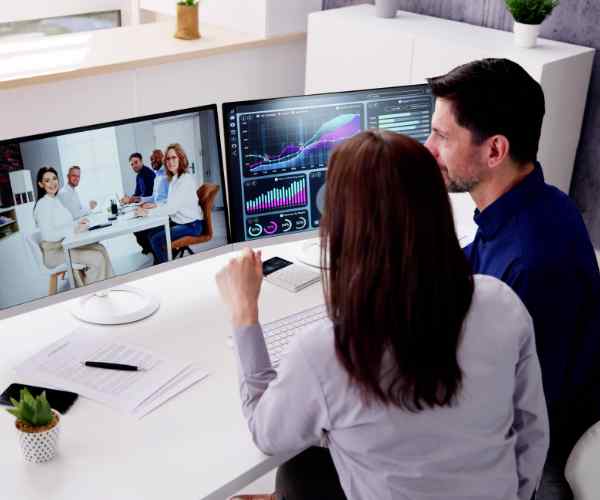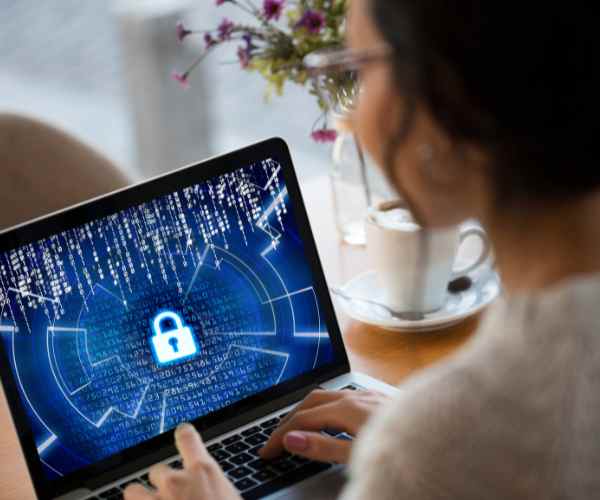In recent years, the landscape of communication has undergone a profound transformation, propelled by the rapid evolution of technology. Virtual meetings have become the cornerstone of modern business operations, enabling seamless collaboration across geographical boundaries. However, this surge in virtual meetings has brought to light a host of cybersecurity challenges that demand immediate attention.
With the proliferation of video conferencing platforms such as Zoom, Microsoft Teams, and Google Meet, the way we connect and collaborate has fundamentally changed. While these platforms offer unprecedented convenience and accessibility, they also introduce significant risks to privacy and data security. Instances of unauthorized access, data breaches, and privacy violations have become increasingly common, posing a threat to sensitive information and undermining user trust.
Ensuring privacy within video conferencing platforms is paramount to safeguarding sensitive information from prying eyes. From confidential business discussions to personal conversations, users rely on these platforms to facilitate secure and private communication. Any compromise in security not only jeopardizes sensitive data but also erodes trust in the platform and its service provider.
In light of these challenges, it is imperative to adopt proactive cybersecurity practices to mitigate risks and bolster defenses. Organizations and individuals alike must prioritize security measures that not only protect data but also preserve the integrity and confidentiality of communication channels. By fostering a culture of cybersecurity awareness and implementing robust security protocols, we can instill confidence among users and uphold the trustworthiness of video conferencing platforms in an increasingly digital world.

The Rise of Video Conferencing
In recent years, the rise of video conferencing has been nothing short of extraordinary, transforming the way we communicate and collaborate in both personal and professional settings. Platforms such as Zoom, Microsoft Teams, and Google Meet have experienced exponential growth, driven by the increasing demand for remote communication solutions.
One of the key factors contributing to this surge is the unparalleled convenience and accessibility offered by these platforms. With just a few clicks, users can connect with colleagues, clients, or loved ones from anywhere in the world, eliminating the barriers imposed by physical distance. This newfound flexibility has revolutionized the way businesses operate, enabling seamless collaboration across diverse industries and sectors.
From multinational corporations to small startups, organizations of all sizes have embraced video conferencing as a vital tool for business continuity. Whether it’s conducting virtual meetings, hosting webinars, or facilitating remote training sessions, video conferencing has become indispensable in the modern workplace. Its versatility and scalability make it suitable for a wide range of applications, from daily team meetings to large-scale conferences and events.
Real-life examples abound of companies that have successfully integrated video conferencing into their operations, reaping the benefits of enhanced communication and collaboration. For instance, multinational corporations use video conferencing to connect geographically dispersed teams, streamline decision-making processes, and reduce travel costs. Similarly, educational institutions leverage video conferencing to deliver online classes, connect students with instructors, and foster interactive learning experiences.
Discussing Prevalent Security Vulnerabilities
As video conferencing platforms continue to gain popularity, they have also become attractive targets for malicious actors seeking to exploit vulnerabilities and compromise sensitive information. One of the most pressing security challenges facing these platforms is the proliferation of security vulnerabilities that can be exploited to gain unauthorized access or manipulate data.
From software vulnerabilities that can be exploited to execute remote code execution attacks to authentication flaws that enable unauthorized users to join meetings, the range of potential security vulnerabilities is vast and constantly evolving. Even seemingly innocuous features such as screen sharing or file transfer functionalities can introduce security risks if not properly implemented and configured.
Highlighting Cases of Privacy Breaches
Privacy breaches and data leaks are among the most damaging consequences of inadequate security measures within video conferencing platforms. High-profile incidents, such as the Zoom bombing incidents, in which uninvited guests hijacked meetings to disrupt proceedings or share offensive content, have highlighted the importance of robust privacy safeguards.
In addition to external threats, internal security lapses can also pose significant risks to privacy. Instances of unauthorized access or insider threats, whether intentional or accidental, can result in the exposure of sensitive information and damage the reputation of both the organization and the video conferencing platform provider.
Emphasizing the Need for Comprehensive Encryption and Authentication Protocols
To mitigate these risks and safeguard user privacy, it is imperative for video conferencing platforms to implement comprehensive encryption and authentication protocols. End-to-end encryption, in particular, ensures that data transmitted during video conferences is encrypted from the sender’s device to the recipient’s device, preventing unauthorized interception or tampering.
Similarly, robust authentication mechanisms, such as multi-factor authentication (MFA) or single sign-on (SSO), help verify the identity of users and prevent unauthorized access to meetings. By requiring users to authenticate themselves using multiple factors, such as passwords, biometric data, or security tokens, video conferencing platforms can significantly reduce the risk of unauthorized access and protect sensitive information from falling into the wrong hands.
Key Features and Technologies
In the realm of video conferencing, encryption serves as a cornerstone for ensuring the privacy and security of communications. At its core, encryption involves scrambling data into an unreadable format during transmission, rendering it indecipherable to unauthorized parties. One of the most effective forms of encryption employed by video conferencing platforms is end-to-end encryption (E2EE).
End-to-end encryption functions by encrypting data on the sender’s device and decrypting it only on the recipient’s device, thereby preventing intermediaries, including the service provider, from accessing the plaintext data. This means that even if the communication is intercepted, the encrypted data remains incomprehensible to eavesdroppers, ensuring confidentiality.
The importance of robust encryption algorithms cannot be overstated when it comes to securing sensitive data shared during video meetings. Advanced encryption standards, such as AES (Advanced Encryption Standard) with 256-bit encryption keys, are widely regarded as industry best practices due to their strength and resilience against cryptographic attacks.
Leading video conferencing platforms prioritize encryption standards to uphold the integrity and security of their services. For instance, platforms like Zoom, Microsoft Teams, and Google Meet have implemented robust encryption protocols to protect user data from unauthorized access and interception. By adhering to stringent encryption standards, these platforms demonstrate their commitment to safeguarding user privacy and mitigating cybersecurity risks.
Outlining Best Practices for User Authentication and Access Control
Effective user authentication and access control are crucial components of ensuring the security and integrity of video conferencing platforms. By implementing robust authentication mechanisms, platform providers can verify the identity of users and prevent unauthorized access to meetings and sensitive information.
One of the best practices for user authentication is the use of multi-factor authentication (MFA). Unlike traditional password-based authentication, which relies solely on something the user knows (i.e., their password), MFA requires additional verification factors, such as something the user has (e.g., a mobile device) or something the user is (e.g., biometric data). This additional layer of security significantly reduces the risk of unauthorized access, even in the event of compromised passwords.
Exploring Multi-Factor Authentication
Multi-factor authentication enhances security by requiring users to provide multiple forms of identification before gaining access to a video conferencing platform. Common forms of MFA include SMS codes, authentication apps (e.g., Google Authenticator), biometric authentication (e.g., fingerprint or facial recognition), or hardware tokens. By requiring users to authenticate themselves using multiple factors, video conferencing platforms can strengthen access controls and mitigate the risk of unauthorized access, even in the event of password compromise.
Offering Practical Tips for Administrators
Administrators play a critical role in managing user permissions and access controls within video conferencing platforms. To ensure effective access control, administrators should regularly review and update user permissions, granting access only to those who require it for their roles or responsibilities. Additionally, administrators should implement role-based access controls (RBAC), which allow them to define specific roles and permissions based on user responsibilities, ensuring that users have access only to the features and functionalities necessary for their tasks.
Furthermore, administrators should monitor user activity and audit logs to detect any suspicious or unauthorized access attempts. By proactively monitoring and enforcing access controls, administrators can mitigate the risk of unauthorized access and maintain the security and integrity of the video conferencing platform.
Best Practices for Secure Meetings
In the ever-evolving landscape of cybersecurity, user awareness and training play a pivotal role in maintaining cybersecurity hygiene and mitigating security concerns during remote work and virtual meetings. Educating users about potential cybersecurity threats and equipping them with the knowledge and skills to identify and respond to these threats is essential for safeguarding sensitive information and maintaining the integrity of secure meetings.
Stressing the Significance of User Education
User education is the first line of defense against cybersecurity threats in the context of virtual meetings. By raising awareness about common security concerns and best practices for mitigating them, organizations can empower users to make informed decisions and take proactive steps to protect themselves and their data. Emphasizing the importance of cybersecurity hygiene, such as keeping software up-to-date, using strong and unique passwords, and being cautious of phishing attempts, can help users mitigate the risk of security breaches and unauthorized access.
Providing Actionable Tips for Participants
Participants in virtual meetings must be equipped with actionable tips and strategies to identify and respond to security threats effectively. This includes being vigilant for signs of unauthorized access or suspicious behavior, verifying the identity of meeting participants, and reporting any security incidents or concerns to the appropriate authorities. Additionally, participants should be educated about the potential risks associated with sharing sensitive information during virtual meetings and encouraged to use secure communication channels when discussing confidential matters.
Highlighting the Role of Ongoing Training Programs
Ongoing training programs are essential for fostering a security-conscious culture within organizations and ensuring that users remain vigilant and informed about emerging cybersecurity threats. By providing regular training sessions, workshops, and educational resources, organizations can reinforce cybersecurity best practices and empower users to stay one step ahead of potential threats. Training programs should cover a range of topics, including password security, safe browsing habits, and the importance of encryption in maintaining the confidentiality of communications.
Offering Guidance on Configuring Video Conferencing Settings
Configuring video conferencing settings appropriately is crucial for maintaining optimal security and protecting sensitive information shared during meetings. Platform administrators and users alike must familiarize themselves with the various security features and settings available to them and configure them according to their organization’s security requirements and preferences.
Discussing Features to Enhance Privacy
Several features can enhance the privacy and security of video conferencing sessions. Waiting rooms allow hosts to control who can join a meeting, ensuring that only authorized participants are granted access. Password protection adds an additional layer of security by requiring participants to enter a password before joining a meeting, preventing unauthorized access. Participant controls, such as the ability to mute or remove participants, can help hosts maintain order and security during meetings, especially in large or public gatherings.
Advising on Regular Updates and Patches
Regular updates and patches are essential for addressing security vulnerabilities and maintaining the integrity of videoconferencing platforms. Platform providers frequently release updates to address known vulnerabilities and improve security features. It is crucial for administrators and users to stay vigilant and promptly install updates to ensure that their video conferencing software remains secure against emerging security risks and threats.
FAQs
How can I ensure my video conferences are secure?
Ensuring the security of your video conferences is paramount to safeguarding sensitive information and maintaining the integrity of your communication channels. To help you achieve this, here are some best practices and actionable steps to implement before and during your video meetings:
- Enable Encryption: Ensure that your video conferencing platform offers end-to-end encryption to protect the confidentiality of your communications. Verify that encryption is enabled by default and that all data transmitted during meetings is encrypted to prevent unauthorized access.
- Implement Access Controls: Utilize features such as password protection and waiting rooms to control access to your meetings. Require participants to enter a password or wait in a virtual waiting room before joining, thereby minimizing the risk of unauthorized access.
- Verify Participants: Before admitting participants into your meeting, verify their identities to ensure that only authorized individuals are granted access. Utilize participant authentication features, such as multi-factor authentication, to enhance security and prevent impersonation.
- Secure Sharing: Exercise caution when sharing sensitive information during meetings. Avoid sharing confidential data unless necessary, and utilize the secure file-sharing options offered by the platform to protect sensitive documents from unauthorized access.
- Stay Updated: Regularly update your video conferencing software to ensure that you have the latest security patches and features. Stay informed about security updates and advisories issued by the platform provider, and promptly install updates to mitigate security risks.
By following these best practices, you can enhance the security of your video conferences and protect sensitive information from cybersecurity threats.
What steps should organizations take to protect sensitive data during video meetings?
Protecting sensitive data during video meetings is a top priority for organizations looking to maintain data privacy and compliance with data protection regulations. Here are some essential steps organizations should take to safeguard sensitive information during video meetings:
- Implement Encryption: Ensure that all data transmitted during video meetings is encrypted using strong encryption protocols. Leverage end-to-end encryption to encrypt data from the sender’s device to the recipient’s device, preventing unauthorized interception or eavesdropping.
- Secure Storage: Implement secure storage practices to protect sensitive data shared during video meetings. Encrypt stored data at rest and utilize secure storage solutions with robust access controls to prevent unauthorized access to sensitive information.
- Control Access: Utilize access controls and permissions to restrict access to sensitive data within the video conferencing platform. Implement role-based access controls (RBAC) to assign permissions based on user roles and responsibilities, ensuring that only authorized individuals have access to sensitive data.
- Train Employees: Educate employees about the importance of data privacy and security during video meetings. Provide training on best practices for securely sharing and handling sensitive information, and reinforce the importance of adhering to organizational policies and procedures.
- Compliance with Regulations: Ensure compliance with relevant data protection regulations and industry standards governing the handling of sensitive data during video meetings. Familiarize yourself with regulations such as GDPR, HIPAA, or CCPA, and implement measures to ensure compliance with data privacy requirements.
Conclusion
In conclusion, the importance of prioritizing cybersecurity for video conferencing platforms cannot be overstated in today’s digital landscape. As the reliance on virtual communication continues to grow, so too do the security risks and threats posed by malicious actors seeking to exploit vulnerabilities and compromise sensitive information.
It is imperative for organizations and individuals alike to remain vigilant and proactive in mitigating these risks and safeguarding privacy. By prioritizing cybersecurity measures such as encryption, access controls, and user authentication, we can create a secure environment for virtual meetings and protect against unauthorized access and data breaches.
Continuous vigilance is essential in the fight against cybersecurity threats, and proactive measures must be taken to stay one step ahead of potential risks. Regular updates, security patches, and ongoing training programs are crucial for maintaining the integrity and security of video conferencing platforms and ensuring the confidentiality of communications.
In light of these challenges, it is imperative for organizations and individuals to stay informed and adopt best practices for secure virtual meetings. By following security guidelines and leveraging available security measures, we can minimize the risk of cybersecurity incidents and protect the privacy of participants.
In summary, prioritizing cybersecurity and adopting best practices for secure virtual meetings are essential steps in safeguarding privacy and maintaining trust in video conferencing platforms. By working together to address security risks and threats, we can create a secure and reliable environment for virtual communication and collaboration.
More Post
- Cybersecurity for Online Learning Platforms: Ensuring Student Privacy
- How to Adaptive Learning Platforms: Tailoring Education to Individual Progress
- Social Learning Platforms: Creating Online Learning Communities
- How do implement 1:1 device programs in schools?
- Can We Unravel the Secrets of the Dark Web? Understanding Cybercrime Hideouts and Their Impact






